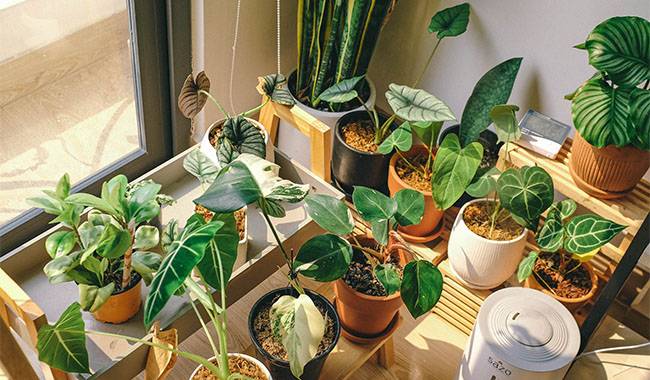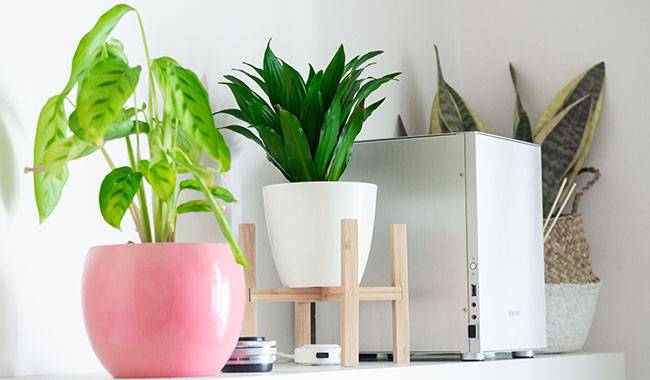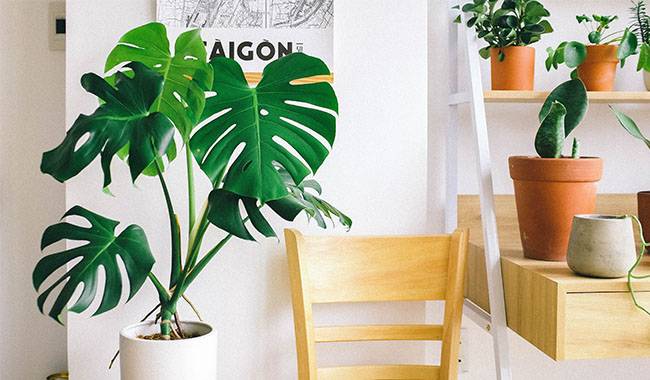
When admiring the beauty of your houseplants‘ plants, foliage, and flowers, you don’t want to think about the practical details and want to choose them “with care.” But those with small children or pets can’t be so careless. While giant thorns, insidious thorns, allergy-causing pollen, and irritating burrs are easy to spot, toxic sap can be hard to guess. The problem of potentially dangerous plant species is much easier than dealing with the consequences. To do this, you need to check the status and poison markers before selecting houseplants. In this article for ThumbGarden, you will learn to distinguish between poisonous plants..
Careless handling is sometimes enough to give one a taste of the “insidiousness” of toxic houseplants. This is especially true for transplanting or pruning when the risks of rough handling are even more significant. Forgetting to wear gloves and skin-covering clothing and accidentally touching the face and eyes with contaminated hands can have unpleasant consequences in practice.
- Poisoning.
- Lesions and irritation of the skin and mucous membranes.
- Allergic reactions.
All of these are unpleasant and potentially dangerous even for adults. And in pets and children under 12 years of age, it can lead to serious consequences. Tempting berries, flowers, and leaves that make you want to touch and taste them
Responsible plant selection is the best defense against possible problems. The list of toxic houseplants includes both unpretentious species and imposing stars.
INDOOR TOXIC SPURGES
Even among garden plants, Spurges are among the first to be potentially dangerous. If damaged in any way, all parts of the plant secrete a milky white sap. Therefore, it is best to avoid contact with these plants by protecting your skin and mucous membranes in all work involving them.
Of course, you don’t think about these dangers when you are admiring the green lace of Euphorbia tirucalli, one of the most popular “graphic” plants with its delicate stick-like and pencil-like shoots. But it’s just as dangerous as other popular species.
Euphorbia trigona (African milk tree)
Euphorbia stellata
Euphorbia grandicornis
Euphorbia lactea var. cristata
No exception to the list is a plant almost unknown to most people – Christmas Euphorbia pulcherrima, a symbol of the beloved holiday.
DANGEROUS PLANTS FOR HOME POTS
The magnificent display of brightly colored berries in the dense undergrowth is simply unforgettable. But you can’t eat the fruits of the internal berry favorites. Eating the berries can lead to severe poisoning.
Nertera granadensis, Its lush mats are dotted with orange balls.
Solanum pseudocapsicum – Its bushes are branched and scattered with berries that gradually turn coral-red.
POISONOUS INDOOR SHRUBS AND CLIMBERS
- Gloriosa superba
Gloriosa superba looks really majestic. The pointed, bright leaves, unusual rhizomes, long flower stems, and towering, pendulous petals make it irresistible. But it is also very dangerous. All parts are as toxic as the mother lily due to the presence of the alkaloid colchicine. - Epipremnum pinnatum
Epipremnum pinnatum a benzoin star that seems to be used to decorate lattices and scaffolds. The heart-shaped leaves with colored spots make the plant look very striking and colorful. Due to its friendly nature, it is easy to forget that all parts of this embroidery are poisonous. Contact with the skin can cause severe irritation, sometimes resulting in burns and swelling of the mucous membranes. - Philodendron
Philodendron is a classic among giants. Whether shrubby or climbing, Philodendron features beautiful aerial roots and is available in various species and varieties with a variety of leathery, tough, dark green leaves. They are dangerous members of the Aroideae family: even light contact with the sap can cause severe allergic reactions. But Philodendron is even more dangerous for pets: contact with them can cause nerve damage and bleeding. - Codiaeum variegatum
Codiaeum variegatum is also annoyingly irritating. Its milky white sap often causes very severe burns to mucous membranes and skin (and food disorders and poisoning if swallowed), which is not surprising in the buttercup family. It is also super dangerous for cats: contact may result in increased salivation accompanied by vomiting. While the colorful, shapely leaves make Codiaeum variegatum look attractive, it’s not worth recklessly introducing it. - Hedera
Hedera (Ivy) is a poisonous classic among lianas. It is harmless to the touch of the skin but can cause severe poisoning if the sap and fruit are swallowed.
Popular plants also need to be handled with care, such as
- Schefflera.
- Fatsia japonica.
- Monstera deliciosa.
Fig trees, including Weeping fig (Ficus weeping fig) and rubber-containing ones (Ficus elastica).
THE MOST POISONOUS OF THE RUSTIC PLANTS

Classic unpretentious plants with brightly colored leaves for even the inexperienced grower, sometimes with nasty surprises.
- Spathiphyllum has beautiful dense large leaves with elegant white caps.
- Aglaonema crispum has feathery leaf patterns.
- Diffenbachia has all many varieties and variations of green-white-yellow mottled patterns.
- Asparagus densiflorus and its poisonous berries.
Exposure to the juice of these common favorites can cause effects ranging from itching and redness of the skin and mucous membranes to nausea, seizures, and respiratory paralysis (if ingested). The animal’s mucous membranes can become swollen. Juices of Diffenbahia and Aglaonema can cause cardiac arrhythmias if ingested.
POISONOUS SUCCULENTS AND CAUDEX
With its columnar, long, pointed stems that grow up to 40 inches (1 meter) tall and its dark, obovate leaves with white veins in interesting bundles, Pachypodium is a memorable plant. And it’s not just the thorns that make it dangerous; the cypress’s milky white sap is also poisonous.
Lophophora williamsii could easily be mistaken for a “living rock.” Thornless and with a peculiarly rounded body, this beautiful flowering cactus contains large amounts of alkaloids and is banned in many countries. Even on mucous membranes, the sap can cause hallucinogenic effects and, if ingested, can lead to severe damage to the nervous system.
Jatropha podagrica is known for its bottle-shaped stem, which gives a particularly spectacular appearance to its five- or three-leaved leaves, which are all up to 8 inches (20 cm) long and wide. The sap can cause severe skin irritation.
Adenium obesum is a poisonous and beautiful flowering star of succulents. The low, thickened trunk and light-colored bark are just backdrops for the huge watercolor-like flowers and teardrop-shaped, bright leaves. Most indoor geraniums are hybrids obtained by crossing with oleanders, making an already poisonous plant twice as dangerous.
POISONOUS BULBOUS HOUSEPLANTS

Hippeastrum is as famous for its poisonous alkaloids as for its huge bulbous flowers. A major winter bulb also requires careful handling during the growing season, but the bulbs are particularly poisonous.
Amaryllis belladonna differs markedly from hippeastrum in flowering. This is all the more surprising since they are sometimes confused and referred to by the same name. Unfortunately, it also belongs to a very dangerous group of plants, whose bulbs and above-ground parts are poisonous. The sap can cause severe skin irritation and, when ingested, can cause nausea, vomiting, and other eating disorders.
Zantedeschia aethiopica has gorgeous arrow-shaped leaves with graceful covering lines around dense spikes of fruit, a dangerous beauty. Handle inflorescences, herbs, and bulbs with care. Severe irritation to mucous membranes may be the “best” option. However, swallowing the sap can cause severe poisoning, vomiting, and nausea.
Clivia miniata is one of today’s major trendsetters. The beauty of its neat inflorescences and leaves arranged in two rows of fan-shaped rosettes is finally getting the recognition it deserves. Due to its alkaloid content, including lysine, its rhizomes are considered highly toxic.
POISONOUS PLANTS FOR THE GARDEN AND INDOORS
The list of poisonous plants can safely be added to the list of seasonal stars in the garden room.
Most bulbous plants (snowdrops, hyacinths, ageratums, daffodils, etc.)
- Arum Lilies.
- Cyclamen.
- Primrose.
- Coleus.
- Catharanthus or Pink Periwinkle.
HOW TO AVOID PROBLEMS?
Prevention is the best way to avoid problems. Simple safety measures in gloves, thorough washing of hands and tools should not be underestimated. Neither is the power of skillfully placing plants out of reach of children and animals or training them.
But if something does get neglected and there is a poisoning or strong reaction that doesn’t go away after a simple water rinse, you shouldn’t panic, take activated charcoal or other adsorbents, and contact medical services immediately. It is very important to provide as much information as possible to your doctor or veterinarian about the plant or parts that caused the poisoning or burn.







